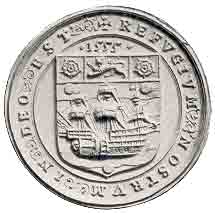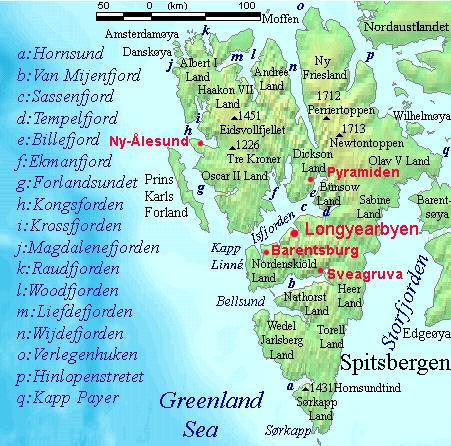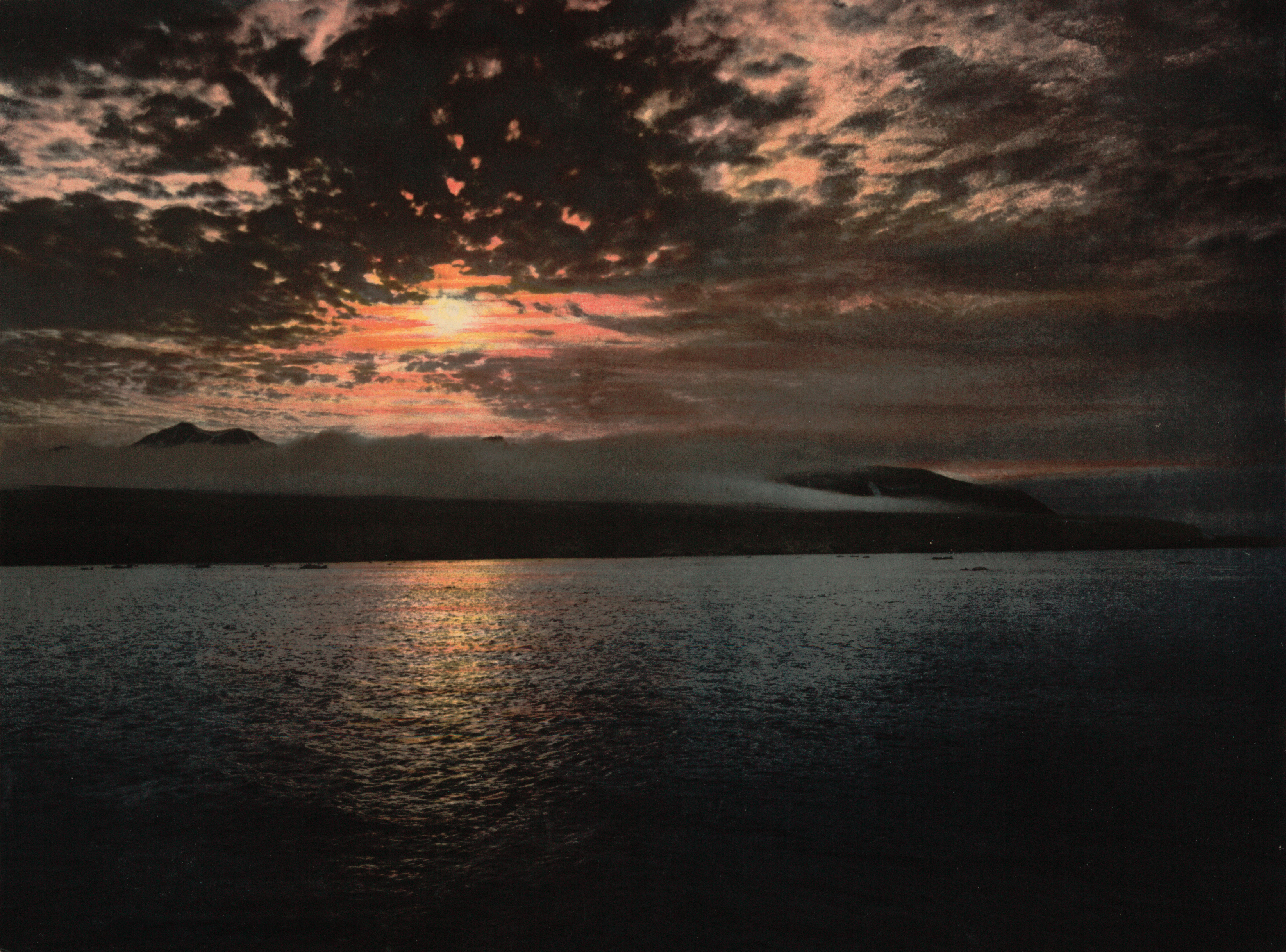|
Willem Cornelisz Van Muyden
Willem Cornelisz. van Muyden (1573, in Muiden – 1634, in Amsterdam) was an early 17th-century mariner. He is known in the Netherlands as ''De Eerste Walvisvanger'' ("The First Whaleman") (1613). Van Muydenbukta and Van Mijenfjorden on the west coast of Spitsbergen and Kapp Muyen on the west coast of Jan Mayen are named after him. Life Van Muyden started his career as a ship's carpenter, but in 1607 he shipped aboard a vessel loaded with grain for Italy. In 1609 he travelled to Norway and Saint-Malo. In 1611 he made his way to the Mediterranean, where his ship was seized by pirates. He arrived in Middelburg in January of the following year. A company in Amsterdam under Lambert van Tweenhuysen, in the wake of the first whaling expedition to Spitsbergen, sent Van Muyden in the ''Neptunus'' to the same locale in 1612. They hired the absconding bankrupt Alan Sallows as pilot, a man who had spent twenty years "in the Northern Seas" in the service of the Muscovy Company. On 13 May ... [...More Info...] [...Related Items...] OR: [Wikipedia] [Google] [Baidu] |
Spitsbergen Labelled
Spitsbergen (; formerly known as West Spitsbergen; Norwegian: ''Vest Spitsbergen'' or ''Vestspitsbergen'' , also sometimes spelled Spitzbergen) is the largest and the only permanently populated island of the Svalbard archipelago in northern Norway. Constituting the westernmost bulk of the archipelago, it borders the Arctic Ocean, the Norwegian Sea, and the Greenland Sea. Spitsbergen covers an area of , making it the largest island in Norway and the 36th-largest in the world. The administrative centre is Longyearbyen. Other settlements, in addition to research outposts, are the Russian mining community of Barentsburg, the research community of Ny-Ålesund, and the mining outpost of Sveagruva. Spitsbergen was covered in of ice in 1999, which was approximately 58.5% of the island's total area. The island was first used as a whaling base in the 17th and 18th centuries, after which it was abandoned. Coal mining started at the end of the 19th century, and several permanent comm ... [...More Info...] [...Related Items...] OR: [Wikipedia] [Google] [Baidu] |
Muscovy Company
The Muscovy Company (also called the Russia Company or the Muscovy Trading Company russian: Московская компания, Moskovskaya kompaniya) was an English trading company chartered in 1555. It was the first major chartered joint stock company, the precursor of the type of business that would soon flourish in England and finance its exploration of the world. The Muscovy Company had a monopoly on trade between England and Muscovy until 1698 and it survived as a trading company until the Russian Revolution of 1917. Since 1917 the company has operated as a charity, now working within Russia. Chancellor would function as the navigator of the small fleet, which consisted of three ships: the ''Bona Esperanza'' under Willoughby, the ''Edward Bonaventure'' under Chancellor and the ''Bona Confidentia''. The fleet departed from London on 10 May 1553, but near the Lofoten islands a storm hit the ships and separated Chancellor's vessel from the other two. Willoughby even ... [...More Info...] [...Related Items...] OR: [Wikipedia] [Google] [Baidu] |
Grønfjorden
Grønfjorden (English: Green Fjord or Green Harbour) is a 16 km long fjord, separated from Isfjorden to the north by Festningsodden in the west and Heerodden in the east. It lies within the western portion of Nordenskiöld Land. On its eastern shore is the mining community of Barentsburg, the second largest settlement (after Longyearbyen) on Spitsbergen. History The fjord was named ''Green Harbour'' by the English explorer (and later whaler) Jonas Poole in 1610. Grønfjorden is the Norwegian equivalent. The first whaleship (a Basque vessel) reached Grønfjorden in 1612; it continued to be used for whaling up until the 1650s. Grønfjorden was the site of the air attack in 1942 during the Operation Fritham. See also *History of Basque whaling The Basques were among the first people to catch whales commercially, as opposed to aboriginal whaling, and dominated the trade for five centuries, spreading to the far corners of the North Atlantic and even reaching the South Atlanti ... [...More Info...] [...Related Items...] OR: [Wikipedia] [Google] [Baidu] |
Isfjord (Svalbard)
Isfjorden is the second longest fjord in the Norwegian archipelago of Svalbard. It lies on the west side of Spitsbergen, an island in the Arctic Ocean about midway between Norway and the North Pole, and the largest in the archipelago. The mountain of Alkhornet stands on the northern side of the entrance to the fjord, as does the coastal plain of Daudmannsøyra. A portion of Isfjorden is included in the national parks of Norway as Nordre Isfjorden Land National Park. Around the fjord lie many of the largest settlements in Svalbard: Barentsburg, Longyearbyen (on the Adventfjorden) and Pyramiden. History A Basque whaling ship from San Sebastian, under the command of Juan de Erauso and piloted by the Englishman Nicholas Woodcock, was the first to establish a temporary whaling station here in 1612. In 1613 French, Basque, and Dutch whaling ships resorted to Safehaven (Trygghamna) on the north side of Isford or in Green Harbour on the south side of the fjord. All were either d ... [...More Info...] [...Related Items...] OR: [Wikipedia] [Google] [Baidu] |
Trygghamna
Trygghamna ( en, haven) is a bay in Oscar II Land at Spitsbergen, Svalbard. It is about six kilometer long, located at the northern side of Isfjorden, east of Protektorfjellet, and separated from Ymerbukta Ymerbukta is a bay in Oscar II Land at Spitsbergen, Svalbard. The glacier Esmarkbreen debouch In hydrology, a debouch (or debouche) is a place where runoff from a small, confined space discharges into a larger, broader body of water. The wor ... by the mountain chain Värmlandryggen. Historically, whalers frequently used Trygghamna as a safe harbour. References Bays of Spitsbergen {{Spitsbergen-geo-stub ... [...More Info...] [...Related Items...] OR: [Wikipedia] [Google] [Baidu] |
Prins Karls Forland
Prins Karls Forland or Forlandet, occasionally anglicized as Prince Charles Foreland, is an island off the west coast of Oscar II Land on Spitsbergen in the Arctic archipelago of Svalbard, Norway. The entire island and the surrounding sea area constitutes Forlandet National Park (''Forlandet nasjonalpark''). History The island was first seen by the Dutch explorer Willem Barentsz in 1596. In 1610, the English explorer Jonas Poole named it ''Black Point Isle''. By 1612 the English whalers were referring to the island as ''Prince Charles' Foreland'', after King James's son, Charles (later king of England and Scotland). The Dutch called it ''Kijn Island'', after a merchant, who, climbing a tall hill in 1612, fell and broke his neck. The English built a temporary whaling station on the island's northern tip, known to the English as ''Fair Foreland'' (today Fuglehuken). See also * List of islands of Norway This is a list of islands of Norway sorted by name. For a list sorted by ... [...More Info...] [...Related Items...] OR: [Wikipedia] [Google] [Baidu] |
Brandy
Brandy is a liquor produced by distilling wine. Brandy generally contains 35–60% alcohol by volume (70–120 US proof) and is typically consumed as an after-dinner digestif. Some brandies are aged in wooden casks. Others are coloured with caramel colouring to imitate the effect of aging, and some are produced using a combination of both aging and colouring. Varieties of wine brandy can be found across the winemaking world. Among the most renowned are Cognac and Armagnac from southwestern France. In a broader sense, the term ''brandy'' also denotes liquors obtained from the distillation of pomace (yielding pomace brandy), or mash or wine of any other fruit (fruit brandy). These products are also called ''eau de vie'' (which translates to "water of life"). History The origins of brandy are tied to the development of distillation. While the process was known in classical times, it was not used for significant beverage production until the 15th century. In the early 16th cen ... [...More Info...] [...Related Items...] OR: [Wikipedia] [Google] [Baidu] |
Fauna
Fauna is all of the animal life present in a particular region or time. The corresponding term for plants is ''flora'', and for fungi, it is '' funga''. Flora, fauna, funga and other forms of life are collectively referred to as '' biota''. Zoologists and paleontologists use ''fauna'' to refer to a typical collection of animals found in a specific time or place, e.g. the "Sonoran Desert fauna" or the "Burgess Shale fauna". Paleontologists sometimes refer to a sequence of faunal stages, which is a series of rocks all containing similar fossils. The study of animals of a particular region is called faunistics. Etymology ''Fauna'' comes from the name Fauna, a Roman goddess of earth and fertility, the Roman god Faunus, and the related forest spirits called Fauns. All three words are cognates of the name of the Greek god Pan, and ''panis'' is the Greek equivalent of fauna. ''Fauna'' is also the word for a book that catalogues the animals in such a manner. The term was first used b ... [...More Info...] [...Related Items...] OR: [Wikipedia] [Google] [Baidu] |
Walrus
The walrus (''Odobenus rosmarus'') is a large pinniped, flippered marine mammal with a discontinuous distribution about the North Pole in the Arctic Ocean and subarctic seas of the Northern Hemisphere. The walrus is the only living species in the family (biology), family Odobenidae and genus ''Odobenus''. This species is subdivided into two subspecies: the Atlantic walrus (''O. r. rosmarus''), which lives in the Atlantic Ocean, and the Pacific walrus (''O. r. divergens''), which lives in the Pacific Ocean. Adult walrus are characterised by prominent tusks and whiskers, and their considerable bulk: adult males in the Pacific can weigh more than and, among pinnipeds, are exceeded in size only by the two species of elephant seals. Walruses live mostly in shallow waters above the continental shelves, spending significant amounts of their lives on the sea ice looking for benthic zone, benthic bivalvia, bivalve mollusks to eat. Walruses are relatively long-lived, social animals, an ... [...More Info...] [...Related Items...] OR: [Wikipedia] [Google] [Baidu] |
Basque People
The Basques ( or ; eu, euskaldunak ; es, vascos ; french: basques ) are a Southwestern European ethnic group, characterised by the Basque language, a common culture and shared genetic ancestry to the ancient Vascones and Aquitanians. Basques are indigenous to, and primarily inhabit, an area traditionally known as the Basque Country ( eu, Euskal Herria) — a region that is located around the western end of the Pyrenees on the coast of the Bay of Biscay and straddles parts of north-central Spain and south-western France. Etymology The English word ''Basque'' may be pronounced or and derives from the French ''Basque'' (), itself derived from Gascon ''Basco'' (pronounced ), cognate with Spanish ''Vasco ''(pronounced ). Those, in turn, come from Latin ''Vascō'' (pronounced ; plural '' Vascōnes''—see history section below). The Latin generally evolved into the bilabials and in Gascon and Spanish, probably under the influence of Basque and the related Aquitani ... [...More Info...] [...Related Items...] OR: [Wikipedia] [Google] [Baidu] |
Bellsund
Bellsund is a long sound on the west coast of Spitsbergen, part of the Svalbard archipelago of Norway. It is separated from Van Mijenfjorden by the islands of Akseløya and Mariaholmen. Bellsund is located south of Nordenskiöld Land and north of Wedel Jarlsberg Land.Norwegian Polar InstitutPlace Names of Svalbard Database History Bellsund was first seen by William Barents in 1596. He simply referred to it as ''Inwyck'' (inlet). In 1610 Jonas Poole explored Bellsund, giving the fjord the name it retains to this day. He named it after a nearby bell-shaped mountain. In 1612 the Dutchman Willem Cornelisz. van Muyden was the first to attempt to catch whales here, but he wasn't very successful as he didn't have any Basque whalemen among his crew. In 1613, Basque, Dutch, and French whaling vessels resorted to Bellsund, but were either ordered away by armed English vessels or forced to pay a fine of some sort.Purchas, S. 1625. ''Hakluytus Posthumus or Purchas His Pilgrimes: Contay ... [...More Info...] [...Related Items...] OR: [Wikipedia] [Google] [Baidu] |







